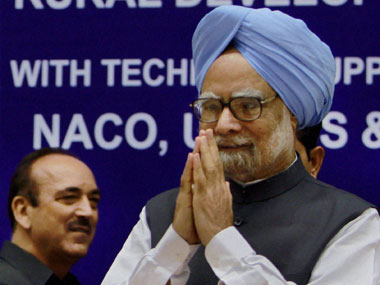There’s talk of early elections. Former ally Mamata Banerjee continues her vitriolic attack on the UPA government. And principal Opposition party BJP- once known for its reformist streak- has already told its cadres to get ready for elections and even threatened to scrap the foreign direct investment (FDI) policy if voted back to power.
But amidst all this, almost like a determined warrior, a new-look Manmohan Singh carries on with his reform agenda. Having unleashed a wave of reforms a few days ago, Singh is now a picture of steely resolve as far as his government’s commitment to reforms goes. After the series of reforms-on FDI, diesel prices and a cap on LPG cylinders - which has left the government on a razor’s edge as far as Parliamentary majority goes, the government is now ready to go ahead with a second wave of steps soon.
The co-ordination committee of UPA partners- something Mamata Banerjee mockingly referred to as ‘CoCo’ in her broadside from Writers’ Buildings just after she withdrew support to Singh’s government - has also decided to back the reform agenda, agreeing there was very little alternative. Singh’s finance minister Palaniappan Chidambaram has also talked of more reform measures to be brought before the Cabinet soon.
[caption id=“attachment_471887” align=“alignleft” width=“380”]
 Manmohan Singh has now decided to go the whole hog and take the battle to its logical conclusion. AFP[/caption]
Manmohan Singh has now decided to go the whole hog and take the battle to its logical conclusion. AFP[/caption]
Clearly, having come this far and remained stoutly defiant in the wake of scathing political opposition, it would now seem Manmohan Singh has now decided to go the whole hog and take the battle to its logical conclusion. It may or may not have anything to do with his turning 80, but Singh, it seems, has decided he would rather go down being labelled a reformer than hang on to bits and pieces and remain in power.
Already, a report in the Wall Street Journal website quotes a government official as more thorny reforms like hiking FDI in insurance to 49 percent from the present 26 percent, and allowing foreign funds into the pension sector, are round the corner. These proposals, if they are brought in, can truly stoke the political fire into a raging inferno. But Singh seems to care little about backlash now.
Says Sanjaya Baru, former media advisor to Singh and someone who has worked with him closely during his first stint as Prime Minister: “The PM has tried hard to build political consensus around a national agenda for economic revival and reform for almost a year. His New Year’s message said it all. But political factors have been blocking action. He has finally decided to put his foot down and do what needs to be done to revive the India Growth Story.”
Put his foot down Singh has, and how. And the results have been rather swift. Bloomberg data shows the rupee, tottering till recently, has climbed four percent and has been the best performer against the dollar among emerging markets since the metamorphosis of Manmohan Singh took shape in the form of the wave of reform measures.
The equity markets have celebrated the reform measures too, climbing sharply since with the BSE Sensex perched at 18,500 levels. Corporate India is singing praises of the government’s new-found resolve and is hungry for more. A report in Mint newspaper of 27 September says a consortium of banks has recently signed two big-ticket loan deals for Tata Steel and Hindalco, indicating a possible return of big investments by Corporate India.
But the bigger question is, how long will all this last? Is there enough political firepower left in the UPA to complete the agenda it has set out to achieve? Or will the political warning bells toll and get the better of it? Some sections also talk of a grand political design on the UPA’s part, saving the best for the last, ahead of possible early polls.
A Bloomberg report of 27 September, in fact, says these reformist measures may, in fact, also be intended to set the stage for an ’expansionary Budget’ next February to defuse popular opposition to the reform measures. The Budget, it is being surmised, could also have measures aimed at the poor, so that the negative impact of the reforms are minimized ahead of the 2014 polls.
In fact, it’s a little bit of all these factors which add up to Manmohan Singh’s math. The former Reserve Bank of India governor who, along with his boss, the then Prime Minister P V Narasimha Rao, crafted India’s liberalization script, is now keen to shed his silent sufferer image and let his bat do the talking as the UPA government enters the slog overs ahead of the elections. As Baru says, he has put his foot down. Whether he will be able to step out of the crease and hit the lofted six to victory remains to be seen. For now, Singh surely has made his point.
)